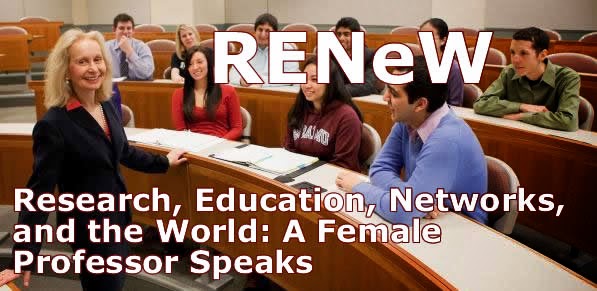 The AAAS Meeting taking place now in Washington DC is simply fantastic -- the weather the past two days was mild (with even forsythia starting to bloom) but, best of all, are the fascinating talks and the level of science and discussion at this meeting. I have been on an intellectual "high" since arriving in Washington. This conference with about 1,000 speakers is taking place at the Washington Convention Center.
The AAAS Meeting taking place now in Washington DC is simply fantastic -- the weather the past two days was mild (with even forsythia starting to bloom) but, best of all, are the fascinating talks and the level of science and discussion at this meeting. I have been on an intellectual "high" since arriving in Washington. This conference with about 1,000 speakers is taking place at the Washington Convention Center.Yesterday, the Mathematics and Collective Behavior Symposium took place, which was organized by Dr. Warren Page. Dr. Iain Couzin began the symposium with gorgeous videos of birds swarming, fish swimming, and throughout his presentation interwove clips of animal collective behavior (including that of sheep and caribou) coupled with some of the mathematical modeling and simulations that he conducts in his laboratory at Princeton. He even included results of a study that he did on undergraduates to try to understand pedestrian movements.
Dr. Pierre Degond then discussed his really interesting work on pedestrian flows and how the flows tend to assemble into lanes of traffic. He even mentioned cost functions associated with transportation flows. Both these speakers captivated the audience and the Q&A was great, but much too short. One audience member even noted crowds in disasters, so when it came for me to present my talk on User-optimized and System-optimized Travel Behavior, I was really ready, given the energy on the panel and in the audience.
In my presentation, I discussed the role that congestion is playing not only in urban transportation networks but also on the Internet and electric power networks. We are living in a nonlinear world. I spoke about selfish versus non-selfish travel behavior and the implications for congestion and travel time.
I brought out the Braess paradox, how we got to translate the original article, which had been published in German in 1968, with Professor Dietrich Braess and Dr. Tina Wakolbinger, so that scientists from any discipline could readily read its contents. I spoke about the methodologies that we use, and have developed, to formulate and solve centralized (system-optimized) versus decentralized (user-optimized) decision-making problems in a unifying way and how the theory of projected dynamical systems can be applied to capture the dynamic adjustment processes underlying a plethora of equilibrium problems, including traffic. I also spoke about what happens to the user-optimized flow patterns as demand varies over time and noted a recent result (in a theorem) that establishes that, as demand increases, the Braess paradox works itself out, suggesting a wisdom of crowds phenomenon, even in selfish networks. in which travelers only care about their own best route of travel.
I also talked about the network efficiency / performance measure that Dr. Patrick Qiang and I constructed that has been used to assess the importance of various links in transportation networks around the world.
I then went on to discuss our research on disasters and what concepts of movements need to be addressed there, as well as, how system-optimization can help in the optimal design of humanitarian-based supply chains for critical needs products.
I brought up how how research in network models, variational inequalities, and projected dynamical systems has now been applied to predator-prey systems and food webs, with notable success in fisheries, which helped to tie the talks at the symposium together.
The questions after my presentation were wonderful, thanks to such a knowledgeable and insightful audience, and many in the audience stayed for quite a while longer, after the symposium had officially ended, since there were so many interesting issues brought up, even potential applications to healthcare. I got a chance to speak with a female computer science faculty member from Howard University and a researcher who works in defense in Canada, the country of my birth.
I also had a chance to speak with journalists from Science News, The Economist, and was interviewed by a radio show host from Milan, Italy (now, how cool is that)! Of course, I had to tell him that the paper that I wrote (and had included a reference to in my presentation) that showed how the traffic flows evolve as demand varies in the Braess network (with applications to the Internet) was written with Professor David Parkes of Harvard and professor Patrizia Daniele of the University of Catania in Italy! I then had lunch with a journalist who focuses on the pharmaceutical industry, and we could not stop talking about global supply chains for medicines as well as food.
The symposium was taped and I believe that AAAS will make it available.
My presentation, in pdf format, can be accessed here.
And today I found a paper that discusses models of crowds, panic behavior, and disasters and that cites not only my translation with Braess and Wakolbinger, but even work of Professor Constantine Dafermos of Brown University, who was the husband of my dissertation advisor at Brown University, Professor Stella Dafermos, who passed away two decades ago. The abstract notes that the researchers' model is able to reproduce the so-called Braess paradox for pedestrians! And, yesterday, we even noted that, when it comes to evacuations, it may be best to actually have a divider in the exit door -- reducing capacity may actually improve traffic flow!

















